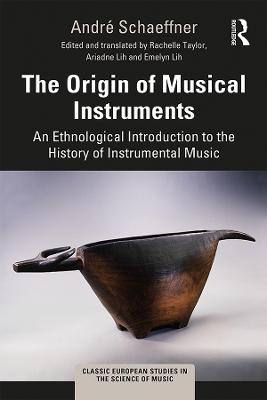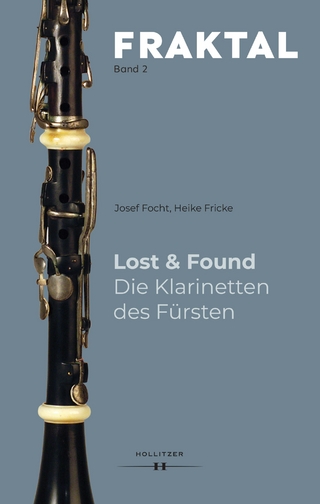
The Origin of Musical Instruments
Routledge (Verlag)
978-1-4724-6399-9 (ISBN)
- Titel z.Zt. nicht lieferbar
- Versandkostenfrei innerhalb Deutschlands
- Auch auf Rechnung
- Verfügbarkeit in der Filiale vor Ort prüfen
- Artikel merken
The work of French musicologist, ethnologist and critic Andre Schaeffner (1895– 1980) grew out of his first organological studies of the history of Western classical instruments in the late 1920s and encapsulated in his wide-ranging Origine des instruments de musique, which captures his studies in Paris between 1931 and 1936.
Almost 80 years after its first publication, the scientific relevance and influence of Schaeffner’s primary hypothesis—that the origins of music can be traced to the human body through gesture, dance and the movements in the use of musical instruments and their ancestor tools—remains pertinent in fields which have returned to informed speculative and empirical research on the origins of music.
This first English edition is accompanied by editorial footnotes and introductory texts, and the influence of Schaeffner’s thought on several generations of musicologists makes his work an essential piece of reading for ethnomusicologists, music psychologists, organologists and musicologists interested in the history of their field.
André Schaeffner (1895–1980) was an ethnomusicologist whose musical knowledge came from his own curiosity and from encounters with some of the great creators and musical minds of his time: Ravel, Debussy, Stravinsky, Boulez and many others. His knowledge of philosophy—Kant, Nietzsche, Bergson— and of literature—Maeterlinck, Claudel, Barres, Peguy, Gide, Proust—was no less impressive. Schaeffner pioneered the reorganization of the Musee du Trocadero— later the Musee de l’homme—where he created a department of "musical organology" in 1928. In 1931 this department became the department of musical ethnology, which Schaeffner would direct until his retirement in 1965. In 1931, along with Michel Leiris and others, he participated in the Dakar-Djibouti expedition led by Marcel Griaule. Directly after the First World War, he became interested in music emerging from oral traditions. His research on musical instruments then led him—already the co-author of one of the first French-language books on jazz—to study the origins of Black American music. His initial fieldwork among the Dogon and other populations of northern Cameroon inspired Origine des instruments de musique, which he began preparing in French Sudan in 1931 and completed in 1936. It appears here in the English language for the first time, edited and translated by Rachelle Taylor, Ariadne Lih and Emelyn Lih.
Editors’ and Translators’ Notes
Rachelle Taylor, Ariadne Lih, Emelyn Lih
Prefatory Remarks
Jean-Jacques Nattiez
Preface to the Original Edition
André Schaeffner
1 Origins of Musical Instruments in the Human Body
2 From Dance Jingles to Castanets
3 From Stamping Tubes to Xylophones
4 The Organology of Theater
5 Working and Playing
6 Religion and Magic
7 Solid Bodies: Rigid, Flexible, or Tensioned
8 A Genealogy of String Instruments
9 Air Instruments
10 Instruments, the Evolution of Music, and the History of Civilization
| Erscheinungsdatum | 10.02.2020 |
|---|---|
| Reihe/Serie | Classic European Studies in the Science of Music |
| Übersetzer | Ariadne Lih, Emelyn Lih |
| Zusatzinfo | 6 Tables, black and white; 97 Halftones, black and white; 103 Illustrations, black and white |
| Verlagsort | London |
| Sprache | englisch |
| Maße | 156 x 234 mm |
| Gewicht | 453 g |
| Themenwelt | Kunst / Musik / Theater ► Musik ► Instrumentenkunde |
| Geisteswissenschaften ► Psychologie ► Allgemeine Psychologie | |
| Geisteswissenschaften ► Psychologie ► Verhaltenstherapie | |
| ISBN-10 | 1-4724-6399-4 / 1472463994 |
| ISBN-13 | 978-1-4724-6399-9 / 9781472463999 |
| Zustand | Neuware |
| Informationen gemäß Produktsicherheitsverordnung (GPSR) | |
| Haben Sie eine Frage zum Produkt? |
aus dem Bereich


